Since its launch last summer, the James Webb Space Telescope has provided many incredibly magical and detailed images of deep space. NASA recently shared a new look at some of these photos by combining infrared data from James Webb with X-ray data from the Chandra Observatory.
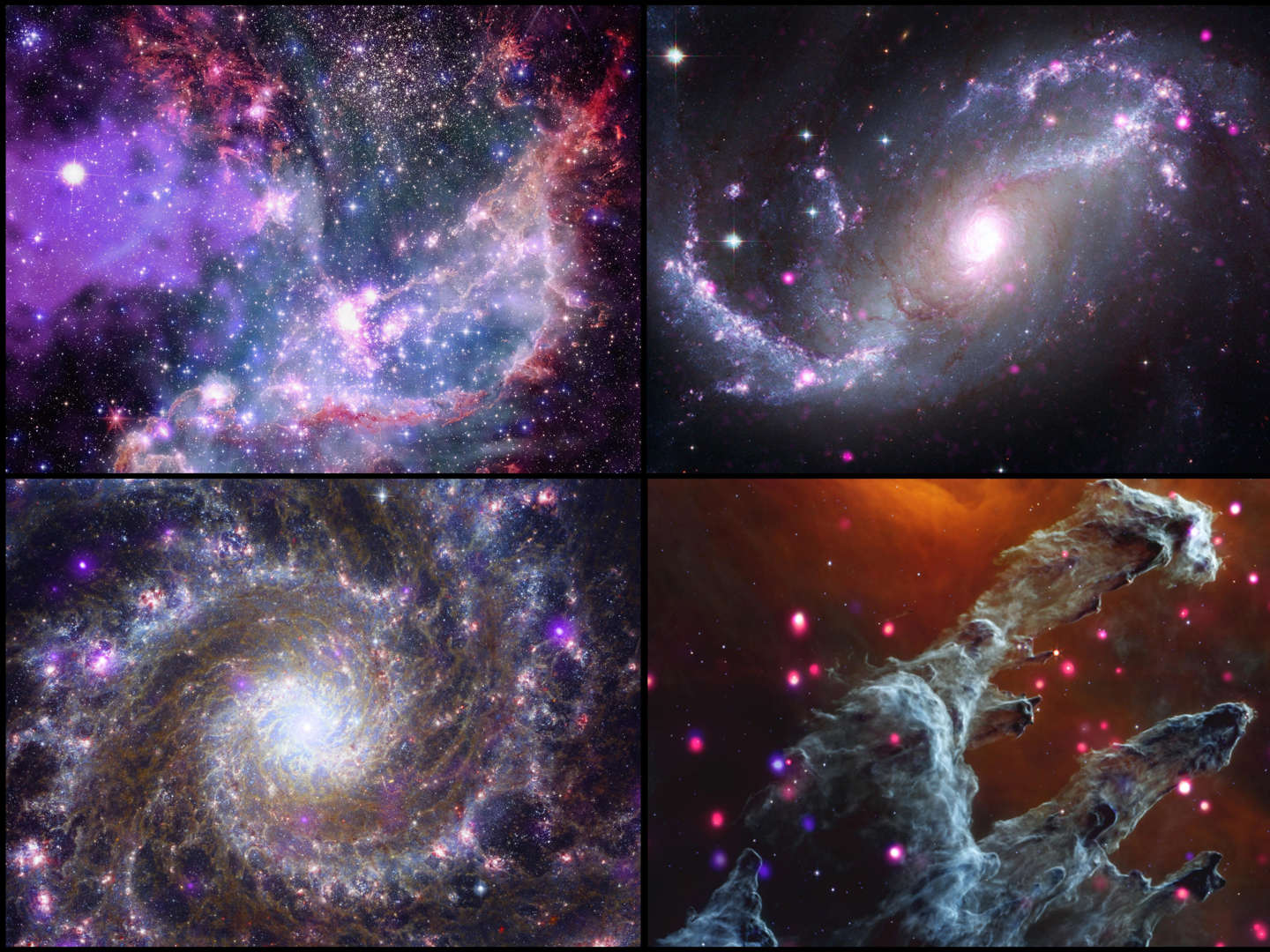
Four new photos show a variety of cosmic objects, such as galaxies and nebulae, combining observations at different wavelengths to show features that would not be visible to the human eye.
In addition to James Webb and Chandra, the images also contain data from the Hubble Space Telescope, which operates in the visible range, and the disabled Spitzer Space Telescope, which operated in the infrared range, as well as the X-ray instrument of the European Space Agency XMM-Newton and the New Technology telescope of the European Southern Observatory, which also operates in the visible wavelength range.
Features of four photos
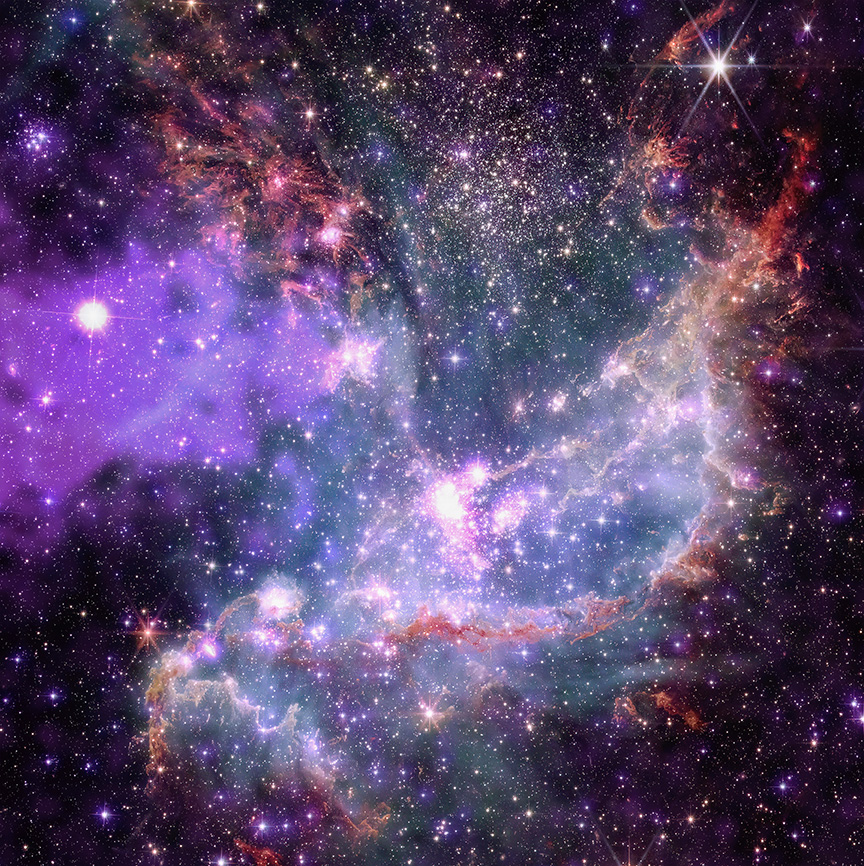
The star cluster NGC 346, located in a satellite galaxy of the Milky Way called the Small Magellanic Cloud. Infrared data from James Webb shows clouds of dust and gas that are used in the formation of stars and planets. The purple cloud is Chandra data showing the effects of a supernova explosion, when a massive star has reached the end of its life and exploded, emitting energy and light. Some of the youngest and brightest stars also emit X-rays, making them clearly visible with Chandra.
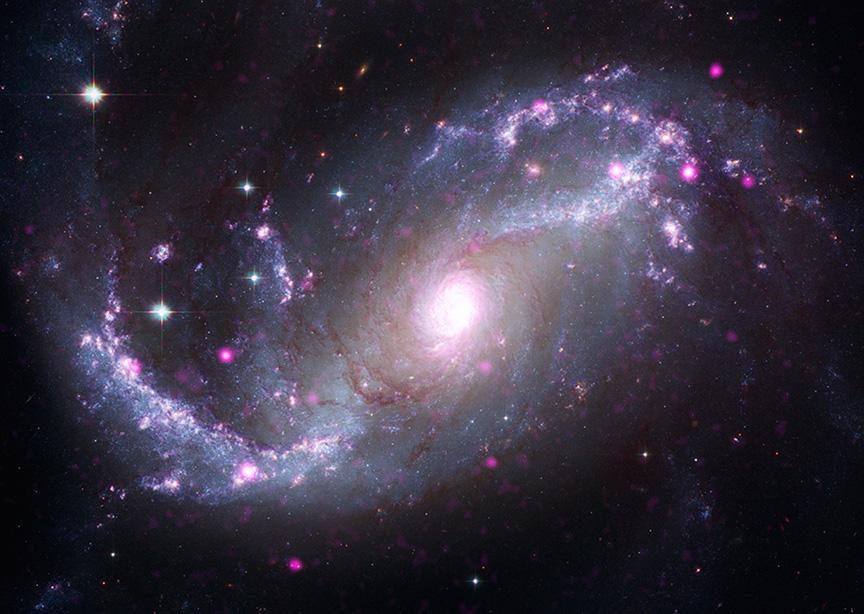
Next comes the spiral galaxy NGC 1672 with stars scattered throughout the galaxy, but concentrated as a band in the center. The Chandra data shows purple dots scattered around the galaxy, which represent extremely dense objects such as neutron stars and black holes. These objects glow in the X-ray range because they attract matter from neighboring stars, and when this matter approaches the objects, it heats up due to friction. When this matter reaches temperatures of up to millions of degrees, it emits X-rays that can be detected by telescopes such as Chandra.
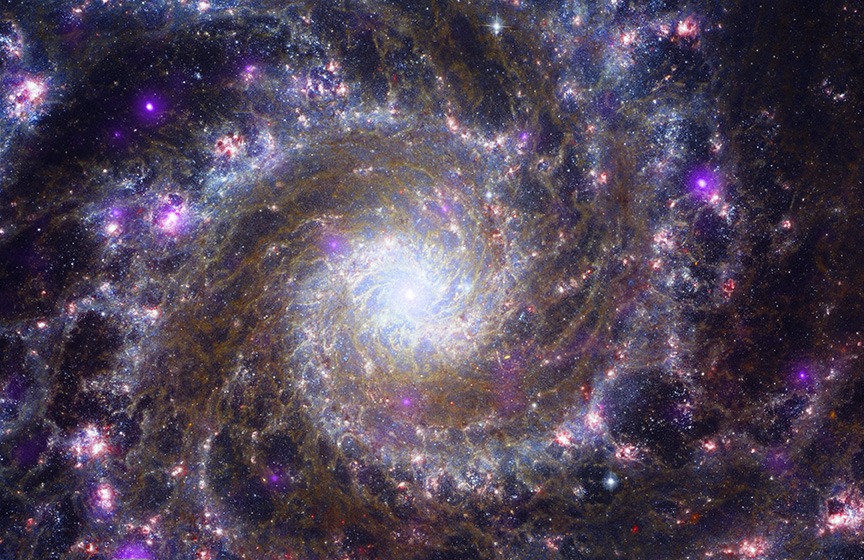
The spiral galaxy M74 is visible from Earth, which makes it possible to see its structure perfectly: the James Webb data show swirls of dust and gas, and the Chandra data highlight particularly active stars that emit X-rays. Similarly, in the famous image of the Eagle Nebula (M16), James Webb highlighted clouds of dust, and Chandra – points of light where bright young stars shine.
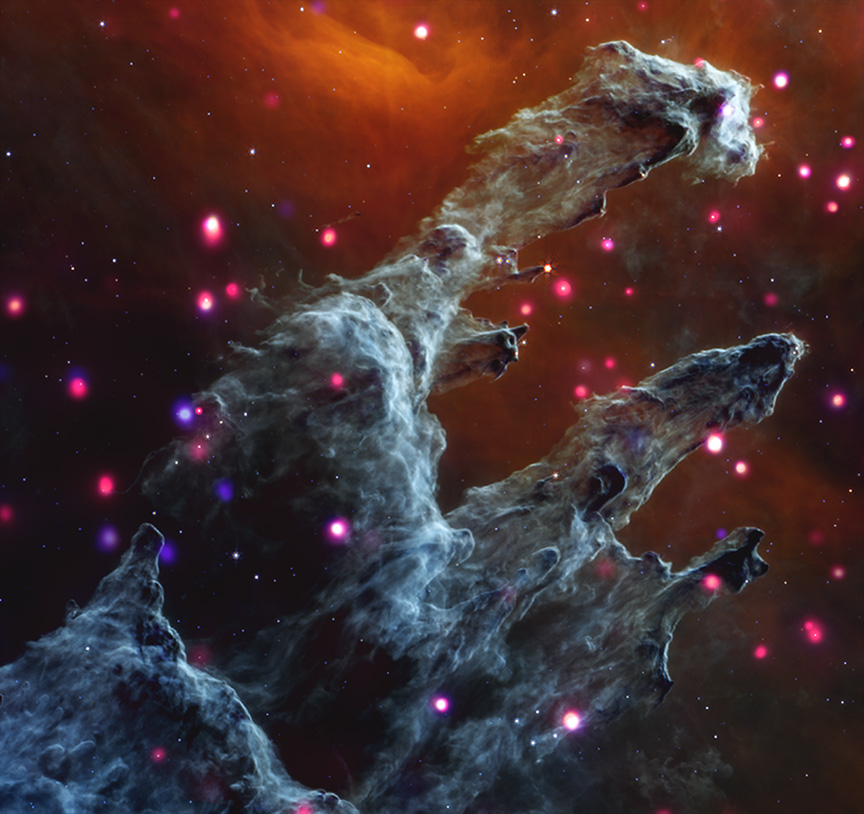
According to chandra.si.edu
Follow us on Twitter to get the most interesting space news in time
https://twitter.com/ust_magazine

